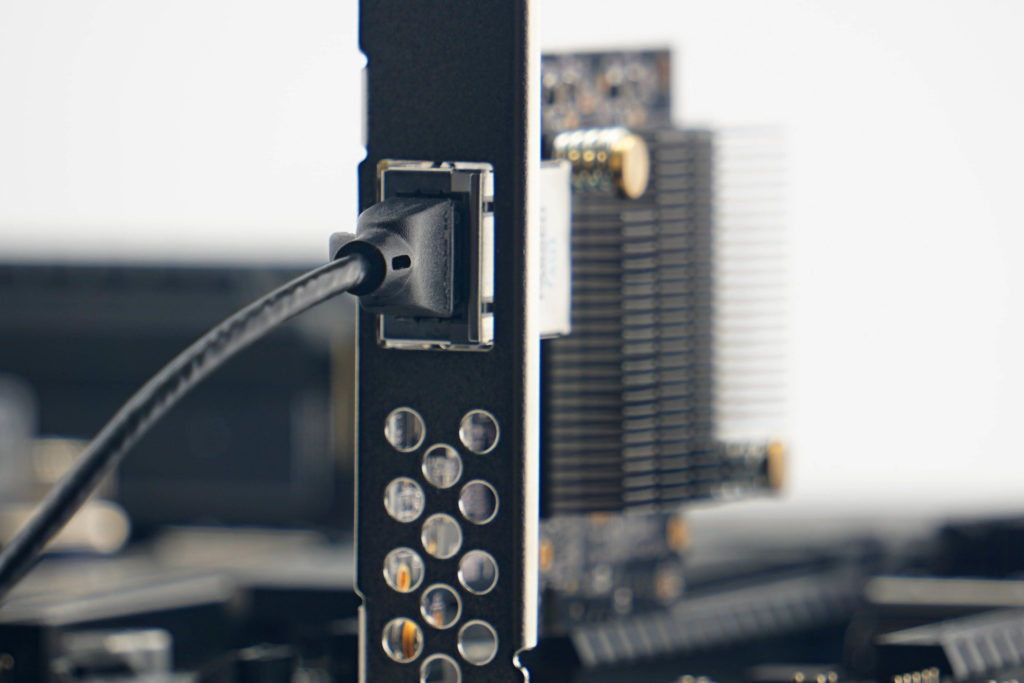Ethernet adapter Axagon ADE-25RC
We tested an external network adapter that is supposed to be useful for connecting older or cheaper desktops, laptops to faster routers or switches. The ADE-25RC, as Axagon refers to this Ethernet adapter, connects using a USB-C interface and is sized to fit just right between your fingers. Its small size makes it well suited for use with mobile devices. And you shouldn’t expect a tradeoff in performance either.
The Axagon ADE-25RC network adapter is useful where faster than gigabit Ethernet is available. Physically, it is a small block (64.4 × 23.3 × 14.1 mm) with an aluminium casing from which a 15 cm short tail protrudes. This is terminated with a USB-C connector and on the other side, towards the body of the adapter, it is attached solidly. However, the cable arrangement at the body of the ADE-25RC is well secured against damage due to frequent bending. This is done by a multi-layer insulation that protects the cable at the point of greatest stress.
At the heart of the Axagon ADE-25RC is the Realtek RTL8156B chip with 2.5 Gb/s bandwidth. The USB 3.2 Gen. 1 interface is generously oversized for it.
Just beware of the slow USB 2.0 ports, which will slow this adapter down considerably. However, such a combination is extremely unlikely in practice, as the adapter uses a USB-C connector usually associated with faster interfaces. Fast enough that the transfer speeds achieved will hit the maximum capabilities of the adapter itself. These are around 300 MB/s for 2.5 GbE in both directions (download and upload).
The final speed is also partly dependent on the specific motherboard, but there will be only small, practically negligible differences. You should always get into the 270–300 MB/s range. Of course, that’s in terms of maximum sequential read and write performance, and therefore the speeds will not be limited by the nature of the (typically very small) files being transferred, nor by surrounding devices that might be slower. Such as typically HDDs or an older router with only gigabit ports.
In the faster USB ports (from 3.2 gen. 1 or rather 3.0), achieving transfer speeds hitting the maximum capabilities of the adapter as such is already expected.
The external design of the adapter itself (with a total weight of 26 grams, by the way) is very simple. The RJ-45 Ethernet connector is on the side, on the side with the smaller surface area. The latter is only slightly larger than the hem of the connector itself.
Detailed specifications of the ADE-25RC network adapter can be found in the table at axagon.eu.
Methodology
We test the speed by copying a 10 GB file between a Samsung 980 Pro SSD (1 TB) and a Patriot Hellfire SSD (480 GB). We do this within a local network, with the Sonnet Solo10G on one side (and the network adapter under test on the other). The download or upload speeds reported in megabytes per second are based on the ratio of the total file size to the time it took to transfer it. The results recorded in the graphs are the arithmetic average of three passes.
The results of the measurements are primarily intended to confirm the specified speed and also the functionality as such. The USB-C network adapter is tested on the Z890 Aorus Elite WiFi7 motherboard.














